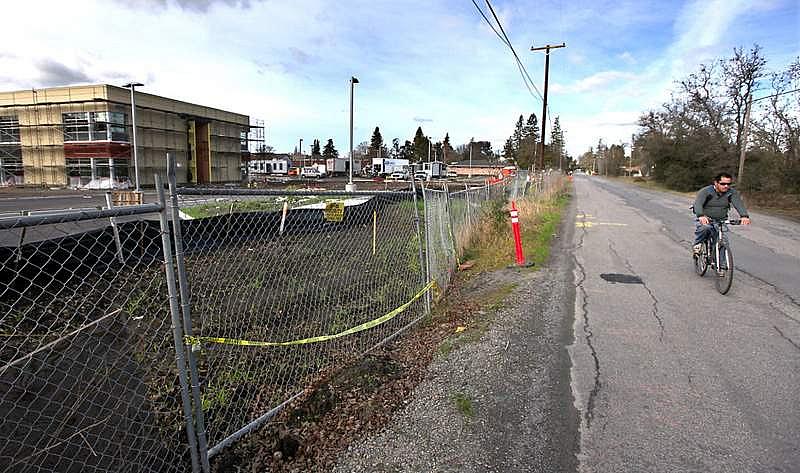Building a Heal Zone for a Low-Income, Latino Residents of Sonoma County

Sonoma County, a suburban and rural county 50 miles north of San Francisco, is often portrayed by boosters as an agricultural mecca - a wine country playground where stunning natural beauty meets economic opportunity. This portrait is only partially accurate, leaving out troubling socioeconomic, educational and health disparities between affluent white residents and a growing Latino population. The chasm can be seen most clearly in Santa Rosa, the largest city in Sonoma County, with a population of 167,815 according to the 2010 census count. Of this population, 71 percent are white, and 28.6 percent identify as Hispanic or Latino.
Read about the projects of other 2014 California Health Journalism Fellows.
The highest concentration of Latino residents is in Roseland, an underserved, low-income, unincorporated area just outside Santa Rosa city limits. Most of Roseland lacks amenities enjoyed by Santa Rosa residents: parks, decent sidewalks, bicycle lanes, smoothly paved roads, libraries, and community centers. Consequently, according to the Sonoma County Dept. of Health, some of the highest rates of overweight and obesity occur here. In Sonoma County, more than one in three low-income children and almost half of all low-income teens are overweight or obese, leaving them at risk for diabetes and hypertension.
According to the 2013 Sonoma County Community Health Needs Assessment, the conditions in which people live, work and age, in combination with social and economic conditions, are now recognized as key determinants of health status. “While it is difficult at the local level to change underlying conditions such as generational racism, stress and income inequity, it is possible to address the neighborhood conditions (both natural and built) that can perpetuate these health inequities,” the assessment states.
For my major domestic reporting project, I will examine the mitigative efforts – and outcomes - of a multi-year initiative running from 2006-2013, focused around Roseland and Southwest Santa Rosa, that designates these areas as a HEAL zone. In 2006, the Sonoma County Department of Health, in coalition with community groups and leaders and funded by a $1 million Kaiser Permanente grant, implemented the Healthy Eating, Active Living Community Health Initiative (HEAL). Through a series of efforts - from salad bars at elementary schools to breastfeeding clinics to partnerships with groups like the Sonoma County Bicycle Coalition to the prominent placement of fruits and vegetables at the front of local markets - the initiative aims to transform the natural and built environment of Roseland by promoting access to healthier foods, preventative wellness and physical activity. The initiative entered its final stage in 2013 and a comprehensive report on the outcome is set for release in spring 2014.
I will gather stories from community members, leaders, and health professionals, along with the teachers, students and administration at schools within the Heal Zone, looking at changes in the community’s wellness since 2006. Have obesity rates gone down? Have community members been able to make healthy, lasting changes in their lives? What, if any, policy changes have occurred? Has Roseland become a more walkable and bikeable community? What is the general temperature of the community’s health? What wasn’t successful? How can public health officials and the Board of Supervisors support the community to become just as has healthy as more affluent residents of Sonoma County? Has the initiative succeeded in significantly altering the built and natural environment? If not, why?
A report by the Sonoma County Economic Development Board found that the Latino population grew 200 percent between 1990-2011. Forecasts predict that Latinos will become the ethnic majority by 2038, and could make up 51 percent of the population in the county by 2050. With such a shift, it’s imperative for the wellness of the entire community that low-income, Latino children, the community leaders and residents of the future, have access to healthy foods and lifestyle choices.
This project will run as a long-form cover story in The Bohemian’s newsstand and online edition with two follow up news stories throughout 2014.
